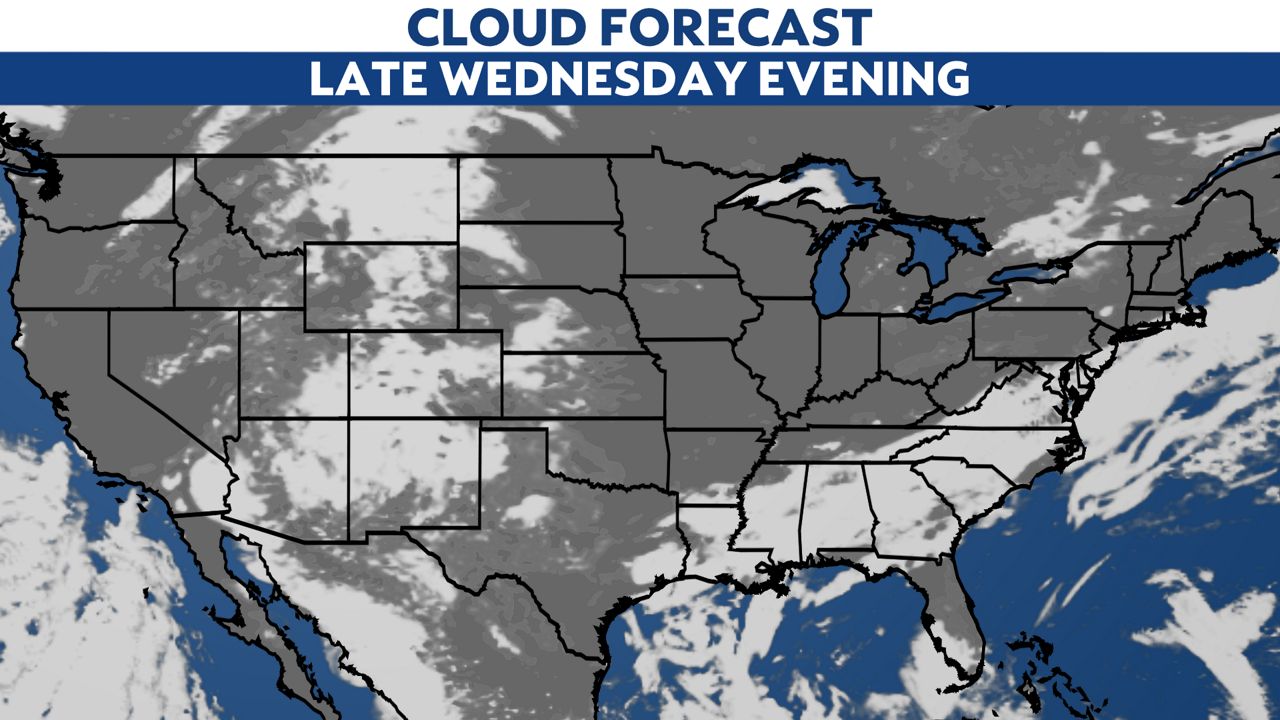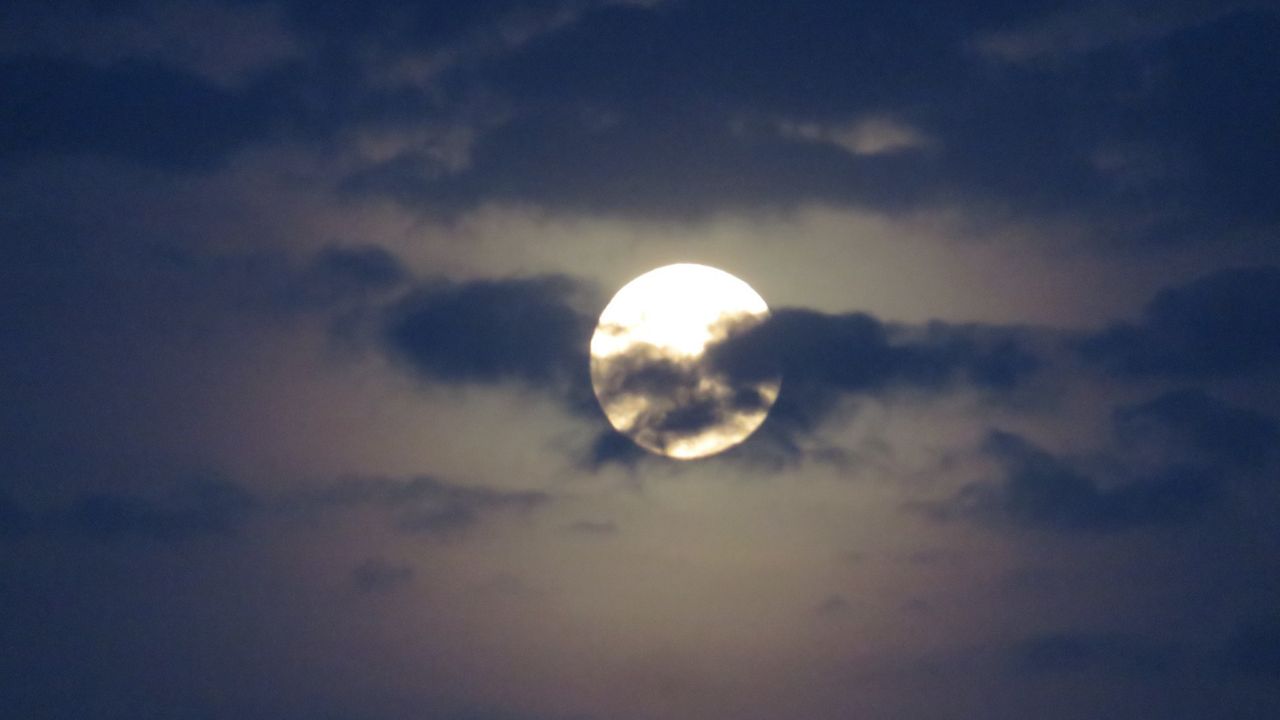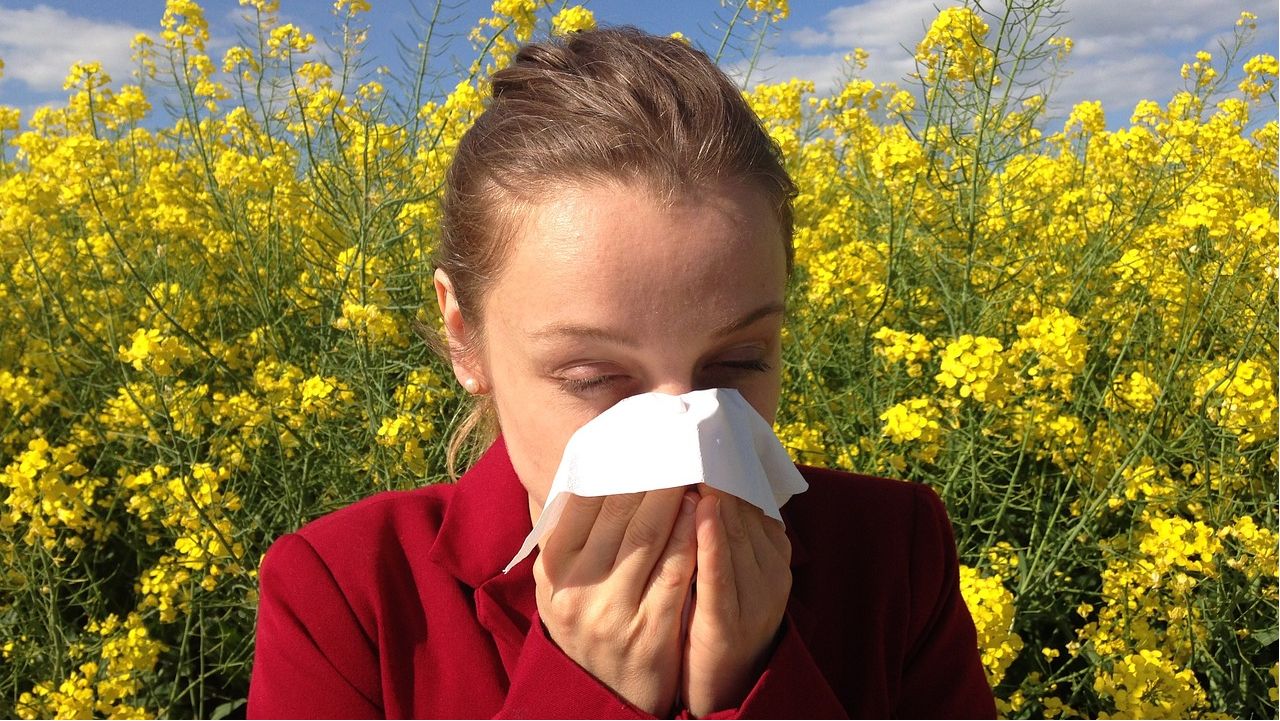This month’s “Buck Moon” also happens when the moon will be at its closest to Earth for the year.
Full moons’ nicknames typically relate to something from that time of year. July’s full moon is called the “Buck Moon” because this is when bucks' (male deer) new antlers have grown more sizeable after starting late in the spring.

This month’s moon is also called the Thunder Moon.
The moon will be its fullest at 1:37 p.m. ET while it’s below our horizon, but it’ll still be essentially full when it rises Wednesday evening.
This is happening during the closest point of the moon’s orbit around the Earth, known as “perigee.” It’ll be about 224,000 miles away. This also means we have a supermoon, which appears a little bigger than other times of the year. Just don’t expect it to loom large in the sky, since it’s pretty hard to tell the difference from memory.
Here's the cloud cover forecast for late Wednesday evening across the country.

Check out our 2022 celestial calendar so you don’t miss out on other night sky events happening the rest of the year.
Justin Gehrts - Senior Weather Producer
Justin Gehrts is a senior weather producer for Spectrum News. He has well over a decade of experience forecasting and communicating weather information. Gehrts began his career in 2008 and has been recognized as a Certified Broadcast Meteorologist by the American Meteorological Society since 2010.









